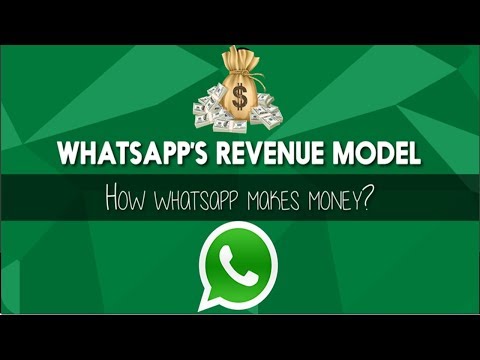Contents:


Some products will be sold by item, such as toilet paper, paper towels, or pencils. However, most items will have a unit of measurement, like ounces, cups, quarts, gallons, milliliters, liters, etc. Assume that ending work in process is 25 percent complete for all components of production . Kenneth W. Boyd has 30 years of experience in accounting and financial services.
Try it now It only takes a few minutes to setup and you can cancel any time. The company must sell each bed frame for more than $725 to generate a profit. Full BioAmy is an ACA and the CEO and founder of OnPoint Learning, a financial training company delivering training to financial professionals. She has nearly two decades of experience in the financial industry and as a financial instructor for industry professionals and individuals. Learn accounting fundamentals and how to read financial statements with CFI’s free online accounting classes.
- To offset the costs of a return, focus on increasing exchanges.
- Next, determine the level of production or the number of units that the company produced of the product.
- Join tens of thousands of ecommerce brands to get more articles like this and our latest resources delivered to your inbox.
- Firstly, the company should calculate the total amount of money spent on the fixed cost during the period by adding all the expenditures incurred on the fixed cost.
First, it is important to know that $598,000 in manufacturing costs to produce 1,000,000 phone cases includes fixed costs such as insurance, equipment, building, and utilities. Therefore, we should use variable costing when determining whether to accept this special order. We automate the process of calculating the planned production cost of production using Excel formulas. Our task is to create a table using Excel tools so that when you substitute data, the production cost of goods, works, and services is automatically considered.
What Jobs Use the Marginal Cost Formula?
You can visit our website ExcelDemy to learn more Excel-related content. Please, drop comments, suggestions, or queries if you have any in the comment section below. In the final step of our exercise, the total cost of production is divided by the total quantity of units produced to arrive at an average cost of $24.00.
In accounting, the Weighted Average Cost method of inventory valuation uses a weighted average to determine the amount that goes into COGS and inventory. The weighted average cost method divides the cost of goods available for sale by the number of units available for sale. The WAC method is permitted under both GAAP and IFRS accounting. It is used commonly in manufacturing units like paper, steel, soaps, medicines, vegetable oils, paints, rubber, and chemicals. Is another costing term that quantifies the value of direct material, direct labor, and other direct expenses incurred in manufacturing any particular product.

Imagine a company that has reached its maximum limit of production volume. If it wants to produce more units, the marginal cost would be very high as major investments would be required to expand the factory’s capacity or lease space from another factory at a high cost. Johnson Tires, a public company, consistently manufactures 10,000 units of truck tires each year, incurring production costs of $5 million. Businesses are often trying to figure out how expensive it will be to produce a specific number of items. They will often use a cost function to determine these numbers. A cost function is a mathematical formula that can be used to calculate the total cost of production given a specific amount of items produced.
Incremental Revenue vs. Incremental Cost
The importance of measuring the https://1investing.in/ cost is tied to setting the pricing of products appropriately, wherein enough profits are generated per sale for the company’s operations to remain sustainable. In terms of salaries, rent, and other overhead, their monthly fixed cost of production is $5,000. Cost per unit identifies the relationship between production costs, logistics costs, and gross profits.
Besides the sg&a definition cost, you can use the cost function to find the average cost and marginal cost of production. To find the average cost, you will simply divide the total cost by the total number of units produced. The marginal, or additional, cost represents the cost of producing one additional unit of the good. If you produce 100 battery chargers, the marginal cost will tell you how much extra it costs to produce that 100th charger.
Comparing the WAC Method under the Periodic and Perpetual Inventory Systems
Prime costs aredirect costs, meaning they include the costs of direct materials and direct labor involved in manufacturing an item. Fixed cost per unit is calculated by dividing the total fixed costs by the number of units produced. For some businesses, per unit costs actually rise as more goods or services are produced.
Natural gas price fixed at $7.92 for April, capped at $6.5 for consumers – The Tribune India
Natural gas price fixed at $7.92 for April, capped at $6.5 for consumers.
Posted: Sat, 08 Apr 2023 04:37:00 GMT [source]
There is a need to prepare a spreadsheet that tracks costs and production output. As output rises, cost per unit decreases, and profitability increases. Incremental cost is usually computed by manufacturing entities as a process in short-term decision-making. It is calculated to assist in sales promotion and product pricing decisions and deciding on alternative production methods. Incremental cost determines the change in costs if a manufacturer decides to expand production. In essence, it assists a company in making profitable business decisions.
Businesses need to calculate the prime cost of each product manufactured to ensure they are generating a profit. The calculation of the total unit cost at this level of activity is as follows. In this case at a production level of 1,000 units the FC per unit is 120. The company pays rent in advance for the whole year, so it is a fixed expense and will not be a part of the variable cost. The per unit price is the price of an item per each unit that is purchased or sold. This is the same as the unit price, but worded in a different way.
Bi-objective bus scheduling optimization with passenger perception … – Nature.com
Bi-objective bus scheduling optimization with passenger perception ….
Posted: Thu, 13 Apr 2023 16:57:49 GMT [source]
It is best to have a relatively low cost per unit, as long as the quality and sustainability standards are maintained. This way, you can price your goods competitively, and still secure decent sales margins. A low per-unit cost is an indicator of efficient production and logistics, which ensures profit is being made per sale. Of course, quality plays a role, as higher quality or premium goods typically cost more to produce than less durable or cheaper materials. For Greg and many other retail businesses, success is heavily reliant on having a profitable cost per unit — and half of that battle is keeping your costs low. Incremental cost analysis considers only relevant costs directly linked to a business unit when evaluating the profitability of that business unit.
Marginal Cost Formula
Direct labor expenses change with change in the production level and thus will be considered a variable cost. Direct material expenses change with change in the production level and thus will be considered a variable cost. Each company calculates the planned production cost in its own way. After all, enterprises bear different costs depending on the type of activity. Any calculation must contain a decoding of the costs of materials and wages.
Santa Fe school board begins budget calculations Education … – Santa Fe New Mexican
Santa Fe school board begins budget calculations Education ….
Posted: Fri, 14 Apr 2023 04:49:05 GMT [source]
They can include the price of crude oil, electricity, any essential raw material, etc. This example illustrates the role that costs play in decision-making. The business owner has to pay for the fixed costs in time even if there is no activity in production. So fixed cost per unit will decrease if the production volume will increase and cost per unit will increase if the production volume decreases.

For example, factory overhead and administrative costs are not part of prime costs. Labor is sometimes a little more complicated to define because, for many companies, the contributions of several different types of employees are crucial to the creation of the end product. At a production level of 1,000 units the calculation of the fixed cost per unit is as follows. Other direct manufacturing overhead changes with change in the production level and thus will be considered a variable cost. X ltd. has the business of manufacturing and selling readymade garments in the market. In September 2019, it incurred some of the expenses given below.
- Prime cost is the direct cost incurred in manufacturing a product and typically includes the direct production cost of goods, raw material and direct labour costs.
- However, if the company fails to sell all the inventory manufactured in that year, there would be poor matching between revenues and expenses on the income statement.
- Cost Of ProductionProduction Cost is the total capital amount that a Company spends in producing finished goods or offering specific services.
- The formula for calculating the planned ratio is the production cost price in monetary terms / purchase price.
The sum of the manufacturer’s fixed and variable costs, i.e. the total cost of production, comes out to $600,000. But to accurately calculate cost per unit, it’s important to understand what is considered fixed costs versus variable costs. Unit CostsUnit cost is the total cost incurred to produce, store and sell one unit of a product or service. It is calculated by adding fixed and variable expense and dividing it by the total number of units produced. The calculation of incremental cost needs to be automated at every level of production to make decision-making more efficient.
Suppose you have a dataset of a stationery shop with a list of Commodities along with their Total Cost, Profit Margin, and Units. The higher priced item is always the one that you pay for – the lower priced item is the one that you get for free. For example, a toilet paper that has a thicker ply or more sheets may have a higher unit cost than single-ply toilet paper with a low sheet count. In this case, you might decide that the higher-quality toilet paper is a better value for you.
 دالاس للتكييف وفلاتر المياه وقطع الغيار
دالاس للتكييف وفلاتر المياه وقطع الغيار




